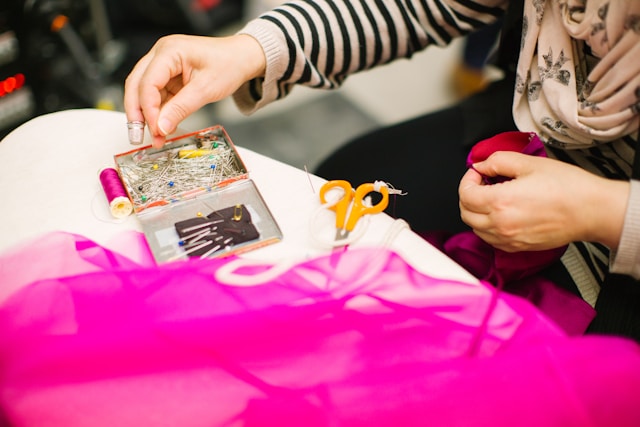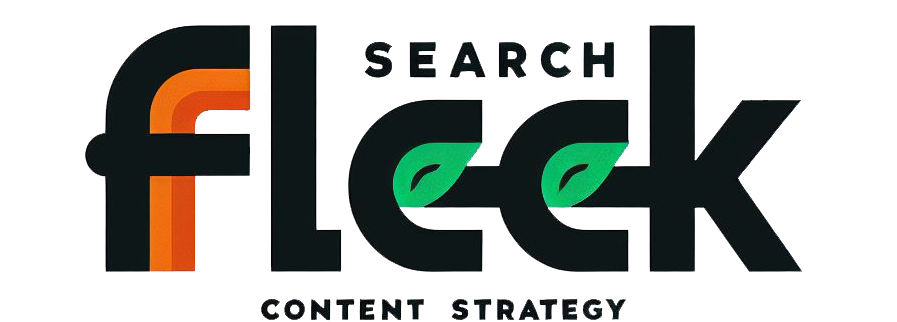The world of DIY (Do It Yourself) is a haven for creative minds. It’s a space where you can transform ideas into tangible projects, personalize your living space, and express yourself through unique crafts. But what if you could share your passion and inspire others with your DIY expertise? That’s where starting a DIY blog comes in.
This comprehensive guide takes you through every step of launching your own DIY blog, from finding your niche to building a loyal audience. Whether you’re a seasoned crafter or just starting to explore the world of DIY, this roadmap will equip you with the knowledge and resources to turn your passion into a thriving online space.
Finding Your Niche and Building a Strong Foundation
A successful blog starts with a clear purpose and a well-defined audience. Let’s delve into the initial steps of building a strong foundation for your DIY blog.
Identifying Your Passions: Brainstorming DIY project ideas
- Explore personal interests and hobbies: What are you naturally drawn to creating? Do you love woodworking and building furniture? Perhaps you have a knack for upcycling vintage finds or transforming your home decor with DIY projects. Take some time to reflect on your passions and identify areas where you have existing skills or a strong desire to learn.
- Identify skill sets and areas of expertise: Do you have a specific skill set that translates well to DIY projects? Maybe you’re a whiz with sewing machines or possess a talent for painting and creating home accents. Even if you’re a beginner DIYer, your enthusiasm and willingness to learn can be valuable assets for your blog.
- Research current DIY trends and audience needs: Stay up-to-date on popular DIY projects and what resonates with audiences. Websites like Pinterest and social media platforms like Instagram can be excellent resources for discovering current trends. Look for gaps in the market where you can offer unique perspectives or cater to specific needs within the DIY community.
Defining Your Niche: Carving out your unique space
- Narrow down your focus: Once you’ve identified your interests and potential audience, it’s time to define your niche. Will your blog focus on DIY furniture projects? Perhaps you specialize in creating eco-friendly home decor using upcycled materials. A narrower niche allows you to cater to a specific audience and become a trusted resource for their DIY needs.
- Analyze competitor blogs and identify gaps: Research other DIY blogs in your chosen niche. See what they’re doing well and identify any potential gaps in their content. Can you offer a fresh perspective, a more beginner-friendly approach, or a focus on specific techniques? Understanding your competition will help you differentiate your blog and stand out from the crowd.
- Tailor your content to a specific audience: Are you targeting experienced DIYers who crave challenging projects, or do you want to cater to beginners who need step-by-step guidance? Knowing your audience demographics will help you tailor your content’s difficulty level, tone, and overall approach.
Crafting a Compelling Blog Name and Brand Identity
- Brainstorming catchy and memorable names: Your blog name is your first impression, so choose a name that reflects your niche and resonates with your target audience. It should be catchy, easy to remember, and ideally relevant to the type of DIY projects you’ll be showcasing.
- Checking domain name availability: Once you have a few potential blog names in mind, use a domain name checker to see if the corresponding domain name (website address) is available. Popular domain registrars like GoDaddy or Namecheap offer this service for free.
- Designing a logo and establishing brand colors: A logo and consistent brand colors will help establish your blog’s identity and create a visually appealing experience for your readers. You can use online design tools like Canva or hire a freelance graphic designer for a more customized approach.
Choosing the Perfect Platform and Building Your Blog

Now that you have a clear vision for your DIY blog, it’s time to choose the right platform and build your online space.
Popular DIY Blogging Platforms: Exploring the options
There are various platforms available for creating your DIY blog. Here’s a breakdown of some popular options:
- WordPress.org (self-hosted): This is a popular and flexible platform that offers a high degree of customization. With WordPress.org, you have complete control over your website’s design, functionality, and monetization options. However, it requires you to purchase web hosting separately.
- WordPress.com (free): This is a user-friendly platform that’s a good option for beginners. It’s a free service, but it comes with limitations on customization and monetization.
- Squarespace: This platform offers beautiful website templates and a user-friendly interface, making it a good option for those who prioritize ease of use and a polished aesthetic. However, Squarespace offers less flexibility compared to self-hosted platforms like WordPress.org.
- Blogger: This is a free platform by Google that’s simple to use and integrates well with other Google products. However, Blogger offers limited customization options and may not be the ideal choice for those who want a highly personalized blog experience.
Consider your technical skills, budget, and desired level of control when choosing a platform. WordPress.org offers the most flexibility but requires some technical knowledge. Platforms like Squarespace and Blogger are easier to use but offer less customization.
Selecting a Web Host (for self-hosted platforms): Finding a reliable home
If you choose a self-hosted platform like WordPress.org, you’ll need to select a web hosting provider. This service essentially rents you space on a server to store your website’s files and make it accessible online. Here are some factors to consider when choosing a web host:
- Storage: How much storage space do you need for your blog content, including images and videos?
- Bandwidth: This refers to the amount of data that can be transferred from your website to visitors’ browsers. Choose a plan that can accommodate your expected traffic volume.
- Security features: Ensure your web host offers security features like firewalls and malware scans to protect your website and visitor data.
- Customer support: Reliable customer support is crucial in case you encounter any technical issues with your website.
Popular web hosting providers for DIY bloggers include Bluehost, SiteGround, and DreamHost. These companies offer a variety of hosting plans at different price points.
Setting Up Your Blog: Taking it live
Once you’ve chosen your platform and web host (if applicable), it’s time to set up your blog! Here’s a basic breakdown of the process:
- Installing WordPress (if using self-hosted platform): Most web hosting providers offer one-click WordPress installation, making the process relatively simple.
- Choosing a user-friendly theme with a DIY aesthetic: A theme determines your blog’s overall design and layout. Choose a theme that’s visually appealing, easy to navigate, and complements your DIY niche. Many platforms offer free and premium themes.
- Installing essential plugins for SEO, security, and functionality: Plugins are like apps for your website that add specific features and functionality. Popular plugins for DIY blogs include plugins for SEO optimization, contact forms, image galleries, and social media sharing.
Pro Tip: Don’t overwhelm yourself with installing too many plugins initially. Start with a few essential plugins and add more as needed.
Creating Engaging and Informative DIY Content

The heart of your blog lies in the content you create. Here’s how to craft compelling DIY posts that will keep your audience hooked.
Planning Your Content Calendar: Keeping your audience hooked
- Brainstorming project ideas that fit your niche: Regularly brainstorm new DIY project ideas that resonate with your target audience. Consider seasonal trends, holidays, and current DIY interests.
- Categorizing projects by difficulty level and target audience: Offer a variety of projects that cater to different skill levels, from beginner-friendly crafts to more advanced projects. This ensures your content appeals to a wider audience.
- Maintaining a consistent posting schedule: Consistency is key to building an audience. Create a content calendar and schedule posts in advance to maintain a regular publishing flow.
Crafting High-Quality Blog Posts: Informing and inspiring readers
Here’s what makes a great DIY blog post:
- Writing clear and concise instructions with step-by-step guides: Break down your projects into clear, easy-to-follow steps. Use simple language and avoid technical jargon that might confuse beginners.
- Using high-quality visuals: photographs, illustrations, and diagrams: Visuals are essential for DIY projects. Include high-resolution photos that showcase each step of the process. Consider incorporating illustrations or diagrams for more complex instructions.
- Optimizing posts for search engines (keywords, meta descriptions): Use relevant keywords throughout your posts and optimize your meta descriptions to help your blog rank higher in search engine results.
- Adding a personal touch: anecdotes, tips, and troubleshooting advice: Don’t just present instructions; share your personal experiences, tips you’ve learned along the way, and troubleshooting advice to make your content more engaging and relatable.
Pro Tip: Consider creating video tutorials in addition to written blog posts. Platforms like YouTube and IGTV offer excellent avenues for showcasing your DIY projects visually.
Beyond Blog Posts: Expanding Your Content Strategy
Here are some additional ways to diversify your content and keep your audience
- Creating DIY video tutorials (YouTube, IGTV): As mentioned earlier, video tutorials are a fantastic way to complement your written content. Platforms like YouTube and Instagram’s IGTV feature allow you to showcase your DIY projects in a visually engaging format. You can film yourself going through each step of the project, providing detailed explanations and close-up shots for intricate details.
- Hosting live streams or Q&A sessions: Live streaming platforms like Twitch or YouTube Live offer real-time interaction with your audience. You can host live DIY sessions, answer viewer questions in real-time, and create a more interactive experience. Additionally, hosting Q&A sessions allows you to address specific audience queries and build a stronger connection with your viewers.
- Developing downloadable resources: printables, project checklists: Provide downloadable resources like printables and project checklists to enhance your blog content. Printables could include project templates, cutting guides, or design patterns. Checklists can help viewers stay organized and ensure they have all the necessary materials before embarking on a project.
Promoting Your Blog and Building Your Audience
Now that you’re creating fantastic DIY content, it’s time to get it out there and build a loyal audience. Here are some strategies to promote your blog:
Optimizing Your Blog for Search Engines (SEO): Getting discovered
- Keyword research: Identifying relevant keywords that people use to search for DIY projects is crucial for SEO (Search Engine Optimization). Use keyword research tools like Google Keyword Planner to find high-volume, low-competition keywords related to your niche.
- On-page optimization (title tags, meta descriptions): Optimize your blog post titles and meta descriptions with relevant keywords. This helps search engines understand your content and increases the chances of your blog appearing in search results for those keywords.
- Building backlinks from other websites: Backlinks are essentially links from other websites that point back to your blog. Having high-quality backlinks from relevant websites improves your website’s authority in the eyes of search engines and can significantly boost your search ranking.
Pro Tip: There are many resources available online to guide you through the intricacies of SEO optimization. Consider investing in an SEO plugin for your blog to help you streamline the process.
Leveraging Social Media Platforms: Connecting with your audience
- Creating engaging social media profiles for your blog: Establish dedicated social media profiles for your DIY blog on platforms like Instagram, Pinterest, and Facebook. Share snippets of your projects, teasers for upcoming blog posts, and behind-the-scenes glimpses. Utilize relevant hashtags to reach a wider audience within the DIY community.
- Sharing snippets of your projects and linking back to blog posts: Don’t just post finished projects on social media. Share enticing snippets of the creative process, pique viewers’ interest, and include a call to action directing them to your blog post for the full instructions.
- Participating in relevant DIY communities and forums: Engage with other DIY enthusiasts by joining online communities and forums related to your niche. Share your expertise, answer questions, and promote your blog content in relevant discussions.
Pro Tip: Utilize social media scheduling tools to streamline your social media promotion efforts. These tools allow you to schedule posts in advance and ensure consistent engagement across your social media platforms.
Collaborations and Networking: Building relationships
- Partnering with other DIY bloggers for guest posts or joint projects: Collaborate with other DIY bloggers in your niche for guest posts or joint projects. This is a fantastic way to cross-promote your blogs, reach new audiences, and create fresh content for your readers.
- Reaching out to brands and suppliers for product reviews or sponsorships: Partner with brands and suppliers relevant to your DIY niche. You could offer product reviews and tutorials featuring their products in exchange for sponsored content or product collaborations.
- Attending DIY events, workshops, and conferences: Participating in DIY events, workshops, and conferences is a great way to network with other creators, connect with potential collaborators, and learn about new trends in the DIY community.
Monetizing Your DIY Blog
While passion is the driving force behind many DIY blogs, there’s also the potential to turn your creativity into a source of income. Here are some ways to monetize your blog:
- Display advertising: Partnering with advertising networks to display ads on your blog can generate revenue. However, ensure the ads are relevant to your audience and don’t detract from the overall user experience.
- Affiliate marketing: Promote relevant DIY products through affiliate marketing programs. You earn a commission for every sale made through your unique affiliate link.
- Selling digital products: Develop and sell digital products like ebooks, project templates, or online courses related to your DIY niche. This allows you to share your expertise in detail and generate ongoing income.
- Offering online courses or workshops: Take your expertise a step further by offering online courses or workshops. You can create paid courses that delve deeper into specific DIY techniques or offer paid live workshops where you guide participants through a project in real-time.
Pro Tip: Before diving into monetization strategies, focus on building a loyal audience first. Once you have a strong following engaged with your content, explore monetization options that complement your blog’s purpose and audience interests.
Nurturing Your Blog and Growing as a DIY Creator
Building a successful DIY blog is a journey of continuous learning and growth. Here’s how to keep your blog thriving and stay inspired.
Analyzing Your Blog’s Performance: Tracking progress and adapting
- Understanding website traffic sources and audience demographics: Regularly analyze your blog’s traffic using tools like Google Analytics. This allows you to see where your visitors are coming from, what content resonates with them, and how much time they spend on your blog.
- Identifying popular content and analyzing user engagement: Identify your most popular blog posts and analyze what makes them successful. Look at engagement metrics like comments, shares, and social media mentions. This helps you understand what type of content resonates with your audience and allows you to tailor your future posts accordingly.
- Adapting your strategy based on data and audience feedback: Don’t be afraid to adapt your blog’s direction based on data and audience feedback. If a particular type of content isn’t performing well, try something new. Pay attention to audience comments and questions to address their needs and keep them engaged.
Staying Inspired and Continuing to Learn: Fueling your creativity
- Experimenting with new DIY techniques and projects: Don’t get stuck in a rut! Challenge yourself by experimenting with new DIY techniques and exploring different project ideas. Research current trends, take online courses, and stay curious to keep your content fresh and exciting.
- Following other DIY blogs and creators for inspiration: Draw inspiration from fellow DIY bloggers and creators. Follow their work, learn from their approaches, and collaborate when possible. The DIY community thrives on collaboration and sharing ideas.
Pro Tip: Consider setting aside time for creative exploration. Schedule time to brainstorm new concepts, experiment with materials, and nurture your creativity to ensure a steady stream of inspiring DIY projects for your blog.
Conclusion: The Rewarding Journey of DIY Blogging
Launching a successful DIY blog requires dedication, creativity, and a willingness to learn. By following these steps, you can build a thriving online space that allows you to share your passion with the world. From crafting engaging content and building a loyal audience to exploring monetization options, the journey of a DIY blogger is filled with opportunities for growth and personal fulfillment.
Remember, the most important ingredient is your passion for DIY projects. Let your enthusiasm shine through in your content and connect with others who share your love for creating something beautiful and unique. So, unleash your creativity, grab your tools, and embark on the rewarding adventure of DIY blogging!
Emon Anam, CEO of Search Fleek, isn't your typical digital guru. He brings a unique blend of financial expertise (former banking pro!) and digital marketing mastery to the table. A self-proclaimed "SEO Sherlock Holmes," Emon unlocks content secrets for local businesses and SaaS companies. But beyond the keyboard, he's a devoted family man, music enthusiast, and cricket champion. Let Emon weave your digital success story!




